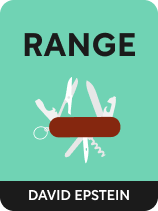

This article is an excerpt from the Shortform book guide to "Range" by David J. Epstein. Shortform has the world's best summaries and analyses of books you should be reading.
Like this article? Sign up for a free trial here .
What is analogical thinking? How can analogies be used to solve complex problems?
In his book Range, David Epstein explains why analogical thinking is a valuable problem-solving tool. Using analogies can help you solve complex problems because it helps you make connections between seemingly unrelated concepts.
Keep reading to learn how analogical thinking can help you yield new ideas by connecting the unconnectable.
Analogical Thinking Yields New Ideas
Epstein asserts that one of the most valuable tools generalists have is analogical thinking—the ability to use analogies to discover commonalities between dissimilar situations. For example, a start-up CEO struggling to decide whether to sell her rapidly growing company could inform her decision by studying 20th-century farmers who discovered massive wealths of oil underneath their land.
Analogical thinking is effective because seemingly unrelated problems often have the same underlying structure, enabling similar solutions. Research has shown that generalists’ diverse background experience makes it easier for them to identify this kind of deep structure and make valuable connections.
To prove the value of analogical thinking, Epstein cites a study in which a psychologist observed the problem-solving brainstorming meetings of research labs. The most successful labs were made up of scientists with diverse background experience in a number of different fields, all offering a multitude of analogies. The best group posed an analogy every four minutes on average.
(Shortform note: Kevin Dunbar, the psychologist who conducted this study, reveals that when he asked the researchers how they arrived at their conclusions, they forgot they had used any analogies at all. This shows that even when they aren’t consciously seeking out analogies, thinkers with wide-ranging backgrounds use them instinctively.)
| The Danger of Faulty Analogies While analogies are an invaluable tool in creative problem solving, they can also be a potent weapon for rhetoricians. Writers and speakers use analogies to ostensibly strengthen the rationale of their position, but faulty analogies can easily create the illusion of logic where there is none. The reason analogies can be such powerful rhetorical devices is that they can transfer feelings attached to one concept to something entirely new. Karl Marx’s analogy comparing the proletariat class to slaves in chains gives his argument a specific, powerful emotional tenor. It takes far less careful reasoning to make a powerful analogy than it does to dissect one and tease apart exactly why two concepts aren’t as similar as they appear. In order to detect whether or not an analogy is valid, ask yourself these two questions, identified in the textbook Writing Analytically: First, “Are the basic similarities greater and more significant than the obvious differences?” Second, “Am I over-relying on surface similarities and ignoring more essential differences?” These questions force us to slow down and consider the logic of an argument instead of being swept away by our initial emotional response. |
Intuition would tell us that a single, closely related analogy would provide the most useful, relevant information to any given problem, but according to Epstein, this isn’t the case.
For example, if you wanted to create a successful app, your instinct might be to look at Uber’s early business plan and copy it as closely as possible—but this isn’t ideal. Often, distant analogies can offer more useful insights. If your idea is for a new anonymous dating app, you may be better off comparing it to the masquerade balls of Renaissance Italy than Uber. The more superficially unrelated an analogy is, the more likely it is to spark new ideas.
Additionally, Epstein asserts that it’s best to consider a wide range of many different analogies. If you study too many details about any one situation, you’re more likely to overanalyze and draw inaccurate conclusions than if you studied a wider range of examples. For example, if you only studied Uber while making your app, you may overvalue the 5-star rating system. Considering multiple analogies also helps inspire a greater number of ideas than considering just one.
| Artists Use Analogies In Steal Like an Artist, Austin Kleon collects and condenses widely accepted advice about creative inspiration. He writes, “You are a mashup […] of what you choose to let into your life.” Since all art is essentially trying to do the same thing—evoke a reaction in its audience—each piece of art can be seen as an analogy for your own work. Each idea that inspires you is another way an artist has tackled your problem, and you’re free to adopt this strategy yourself. Just as a wide range of analogies can help you figure out what works and what doesn’t, a wide range of creative inspirations helps you determine what is worth including in your own art. “Your job is to collect good ideas,” writes Kleon, “The more good ideas you collect, the more you can choose to be influenced by.” Epstein’s logic applies here, too—the more superficially distant an artistic inspiration is from the situation at hand, the more likely it is you’ll come up with something original and effective. The screenwriter of Groundhog Day was inspired by a novel about vampires (The Vampire Lestat by Anne Rice), which got him thinking about what people would do if they lived forever. |

———End of Preview———
Like what you just read? Read the rest of the world's best book summary and analysis of David J. Epstein's "Range" at Shortform .
Here's what you'll find in our full Range summary :
- Why it's better to be proficient in a range of skills rather than becoming a specialist in one
- Why you're never “too late” to pursue something you’re interested in
- Why the nontraditional background of a generalist gives them an edge






